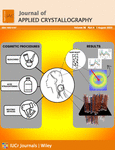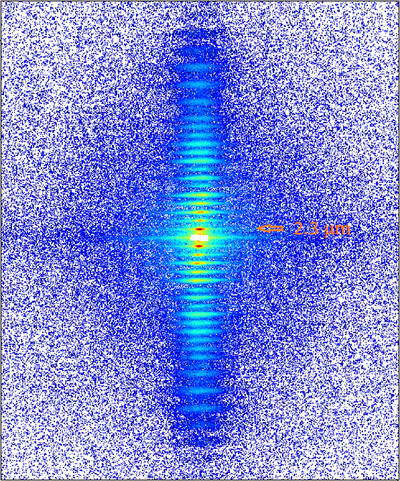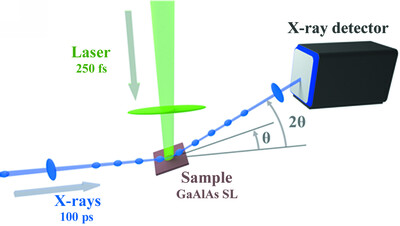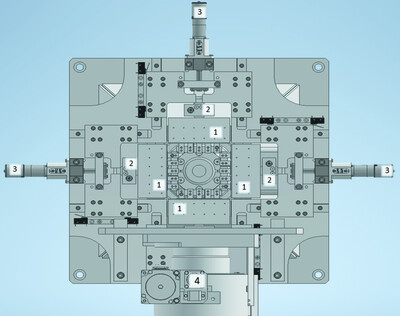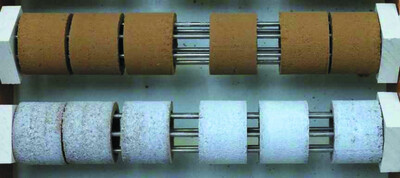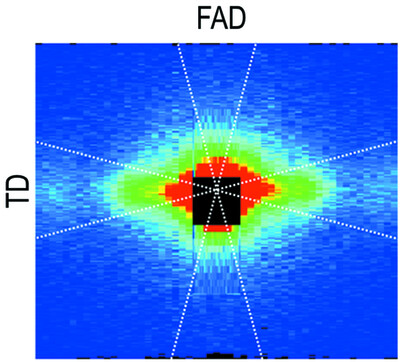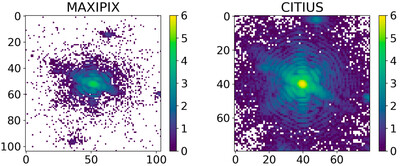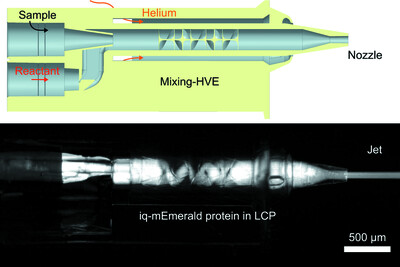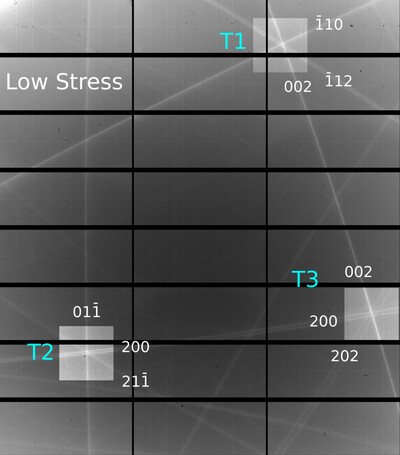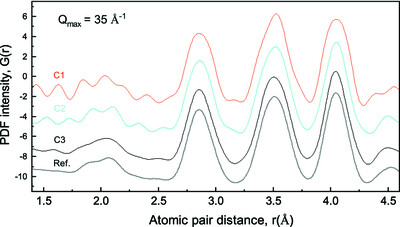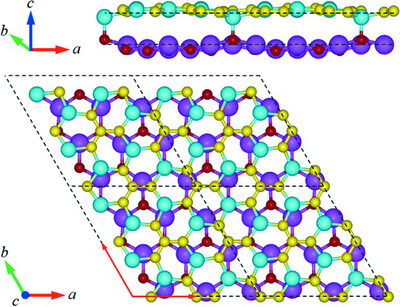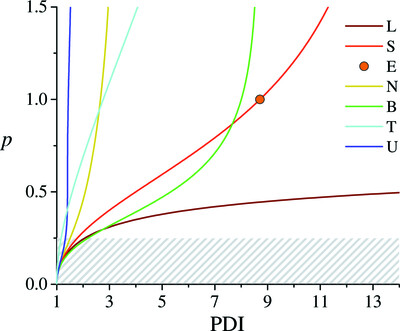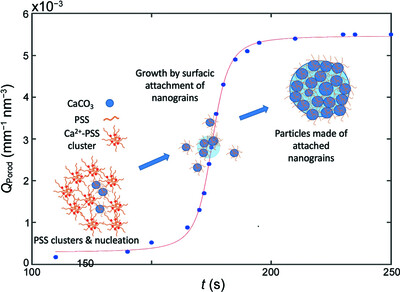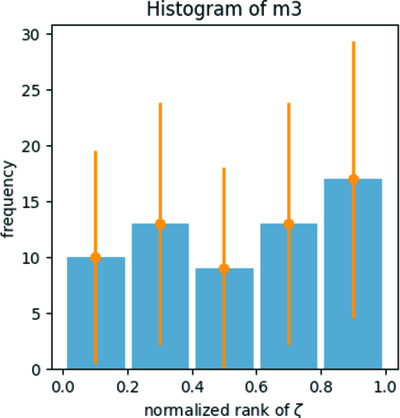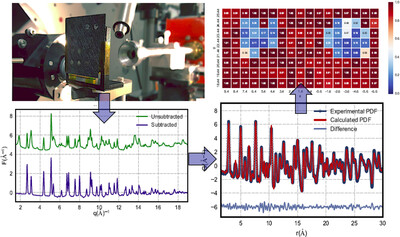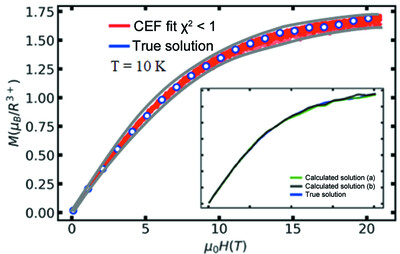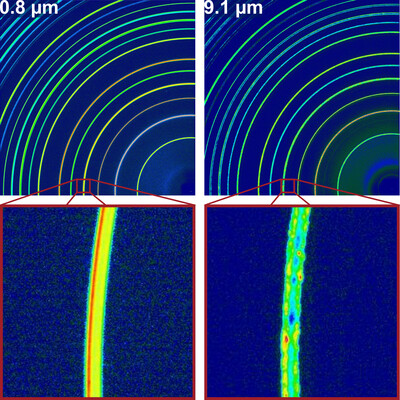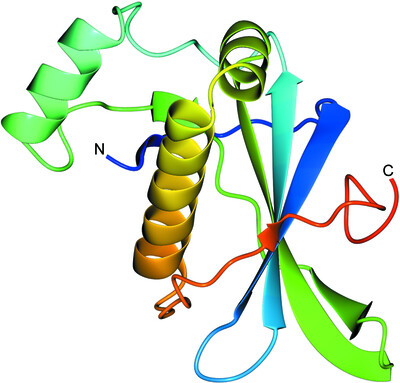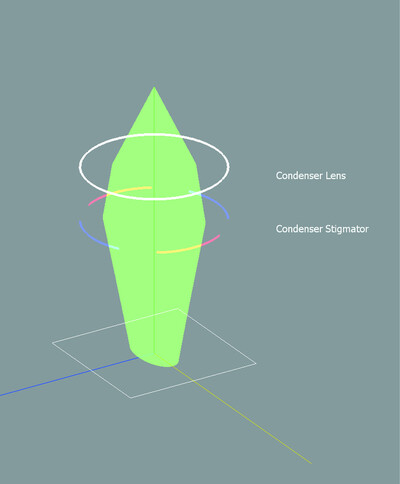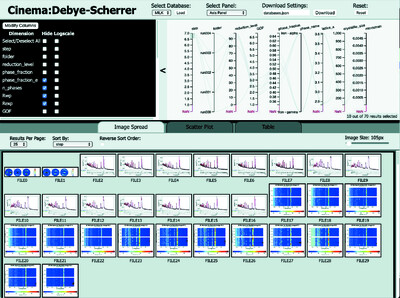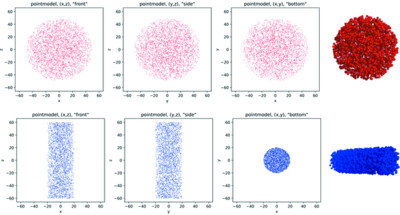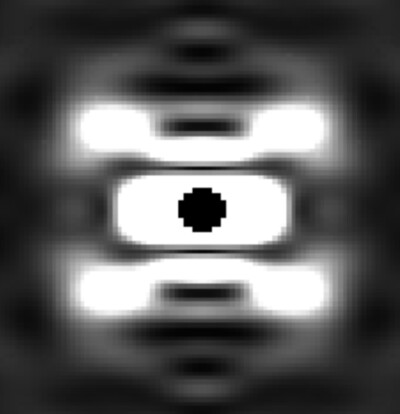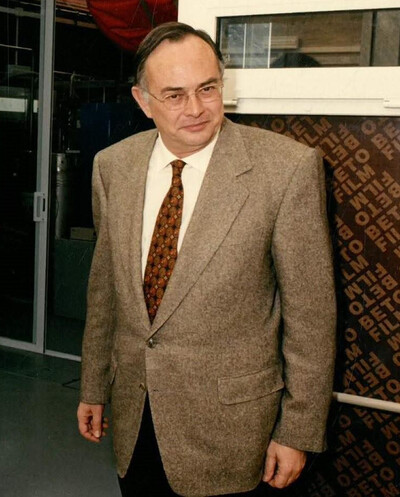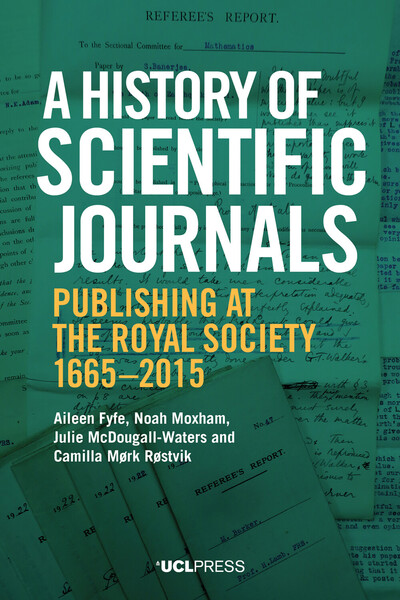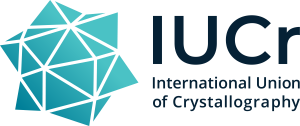Journal list menu
Export Citations
Download PDFs
research papers
AlphaFold-predicted protein structures and small-angle X-ray scattering: insights from an extended examination of selected data in the Small-Angle Scattering Biological Data Bank
- Pages: 910-926
- First Published: 20 July 2023

A rapid ensemble modelling method that optimizes the fit to the small-angle X-ray scattering (SAXS)-derived pair-wise distance distribution function [P(r) versus r] and the measured intensity profile [I(q) versus q] has been used to account for differences between AlphaFold-predicted and experimental SAXS profiles. By considering the confidence levels that come with the predicted structures, a conformational ensemble with potentially flexible linkers between stable folded domains can be optimized to provide representative structures.
Novel methodology to determine thermal properties of nanoparticles exclusively based on SAXS measurements applied to Bi nanocrystals and nanodroplets in a glass matrix
- Pages: 927-938
- First Published: 16 June 2023
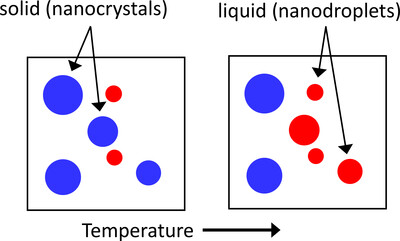
A novel methodology using solely small-angle X-ray scattering (SAXS) measurements at multiple temperatures is proposed to determine the coefficients of thermal expansion of confined spherical nanocrystals and/or nanodroplets and the radius dependence of the melting temperature of spherical nanocrystals.
Small-angle X-ray scattering in the era of fourth-generation light sources
- Pages: 939-946
- First Published: 23 June 2023
Extended Q-range small-angle neutron scattering to understand the morphology of proton-exchange membranes: the case of the functionalized syndiotactic-polystyrene model system
- Pages: 947-960
- First Published: 25 July 2023
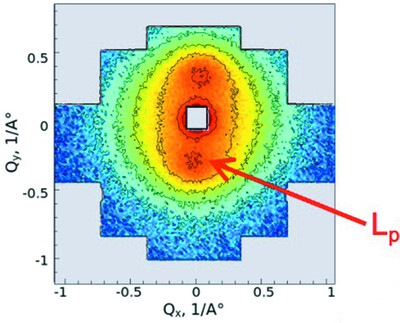
Semi-crystalline polymers present a hierarchical organization of structural levels from ångströms to hundreds of nanometres. By combining small- and wide-angle neutron scattering at the same instrument, such complex morphologies can be resolved under application of relevant humidity and temperature conditions.
Implication of the double-gating mode in a hybrid photon counting detector for measurements of transient heat conduction in GaAs/AlAs superlattice structures
- Pages: 961-966
- First Published: 16 June 2023
In situ biaxial loading and multi-scale deformation measurements of nanostructured materials at the CoSAXS beamline at MAX IV Laboratory
- Pages: 967-975
- First Published: 30 June 2023
Microstructural changes in building materials after various consolidation treatments studied by small-angle neutron scattering, mercury intrusion porosimetry and scanning electron microscopy
- Pages: 976-987
- First Published: 14 July 2023
Revealing cholesterol effects on PEGylated HSPC liposomes using AF4–MALS and simultaneous small- and wide-angle X-ray scattering
- Pages: 988-993
- First Published: 25 July 2023
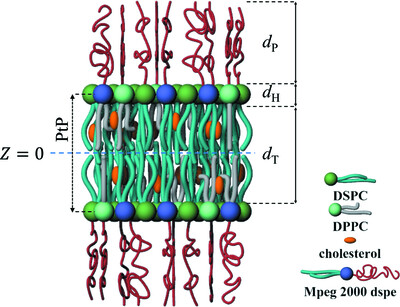
Small- and wide-angle X-ray scattering and asymmetric flow field-flow fractionation integrated with multi-angle light scattering (AF4–MALS) are used to characterize PEGylated liposomes of hydrogenated soy phosphatidylcholine (HSPC) that have potential for drug delivery. Observed local and global structural changes of the phospholipid bilayers reveal the effects of cholesterol on PEGylated HSPC liposomes.
Upgraded D22 SEC–SANS setup dedicated to the biology community
- Pages: 994-1001
- First Published: 12 June 2023
Alterations promoted by acid straightening and/or bleaching in hair microstructures
- Pages: 1002-1014
- First Published: 01 August 2023
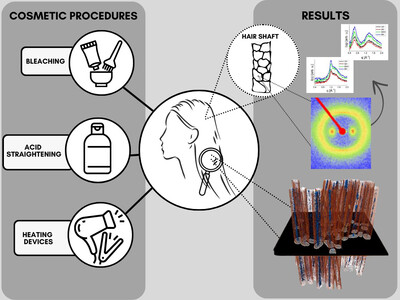
A systematic investigation on alterations promoted by acid straightening and/or bleaching in hair microstructures is presented. By combining X-ray scattering methods and microcomputed tomography, among several other methods, innovative results were obtained on the structure and thermodynamics of human hair subjected to cosmetic procedures.
Water distribution in human hair microstructure elucidated by spin contrast variation small-angle neutron scattering
- Pages: 1015-1031
- First Published: 30 June 2023
Bragg coherent diffraction imaging with the CITIUS charge-integrating detector
- Pages: 1032-1037
- First Published: 12 June 2023
Mix-and-extrude: high-viscosity sample injection towards time-resolved protein crystallography
- Pages: 1038-1045
- First Published: 12 June 2023
Robust phase determination in complex solid solutions using diffuse multiple scattering
- Pages: 1046-1050
- First Published: 12 June 2023
Exploring the impact of incoherent Compton scattering on X-ray pair distribution function analysis of disordered materials
- Pages: 1051-1056
- First Published: 16 June 2023
Equilibration of precipitants in a counter-diffusion apparatus for protein crystallization
- Pages: 1057-1065
- First Published: 23 June 2023

A cost-effective capillary dialysis apparatus (Toledo Capillary Box) was developed for biomacromolecule crystal growth in microgravity and unit gravity environments to provide slow equilibration between the precipitant reservoir and capillary solutions. Analytical and semi-analytical models allow the prediction of precipitant equilibration of capillary and reservoir solutions under diffusion-controlled transport and show good agreement with experimental results.
In situ neutron diffraction to investigate the solid-state synthesis of Ni-rich cathode materials
- Pages: 1066-1075
- First Published: 23 June 2023
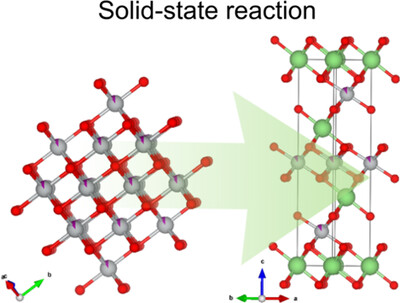
In situ neutron diffraction is demonstrated as a suitable technique to track phase evolution during synthesis of layered oxide compounds. The synthesis of a series of cathode materials for Li-ion batteries with different Ni/Mn ratio is investigated, in batches comparable to standard laboratory conditions, demonstrating the delayed onset of lithiation with increasing Mn content.
Texture-based residual stress analysis of laser powder bed fused Inconel 718 parts
- Pages: 1076-1090
- First Published: 30 June 2023
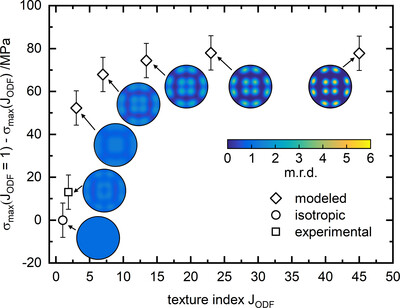
In this article, a texture-based characterization of surface, sub-surface and bulk residual stress in laser powder bed fused Inconel 718 alloy is carried out. It is shown that, in the case of this nickel-based superalloy, the texture affects the residual stress determination only when it has sufficient strength.
First-principles study on the electronic structure of siligraphene on a ZnO monolayer
- Pages: 1091-1098
- First Published: 30 June 2023
Particle-size polydispersity analysis based on the unified exponential/power-law approach to small-angle scattering
- Pages: 1099-1107
- First Published: 30 June 2023
Orientation mapping of YbSn3 single crystals based on Bragg-dip analysis using a delay-line superconducting sensor
- Pages: 1108-1113
- First Published: 14 July 2023
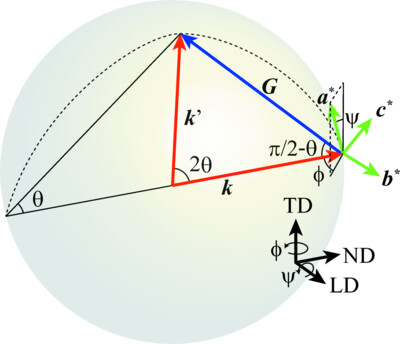
It is demonstrated that a newly developed superconducting neutron detector, called a current-biased kinetic inductance detector, can be used for crystal orientation mapping based on the Bragg dips observed in a neutron transmission spectrum. The neutron transmission spectra of YbSn3 single crystals were observed up to 100 eV, and crystal orientations were determined.
Insights into the precipitation kinetics of CaCO3 particles in the presence of polystyrene sulfonate using in situ small-angle X-ray scattering
- Pages: 1114-1124
- First Published: 14 July 2023
Structure evolution of Bi4O7 under high pressure
- Pages: 1125-1130
- First Published: 20 July 2023
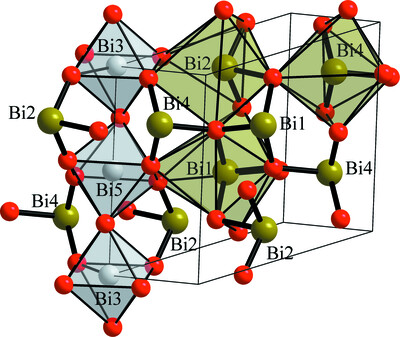
Two isostructural phase transitions were observed for Bi4O7 during compression under high pressure. The pressure–volume curve was found to be discontinuous at the two pressure transition boundaries. Fitting the curves of the three different stages revealed large differences in the bulk moduli, confirming the two isostructural phase changes.
Combining synchrotron X-ray diffraction, mechanistic modeling and machine learning for in situ subsurface temperature quantification during laser melting
- Pages: 1131-1143
- First Published: 20 July 2023
Representative volume elements of strain/stress fields measured by diffraction techniques
- Pages: 1144-1167
- First Published: 20 July 2023
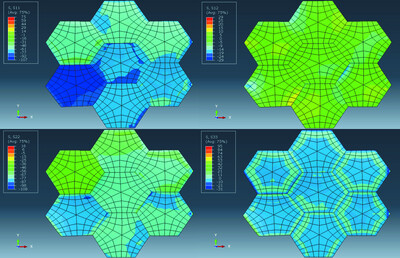
Representative volume elements for diffraction-based stress/strain distributions in polycrystalline materials are compared with direct-space values of these quantities using numerical modelling. The results indicate that these volumes and their stress states are equivalent under very specific conditions.
Quantifying molecular deformation in polymer melts by a generalized Zimm plot approach
- Pages: 1168-1179
- First Published: 25 July 2023
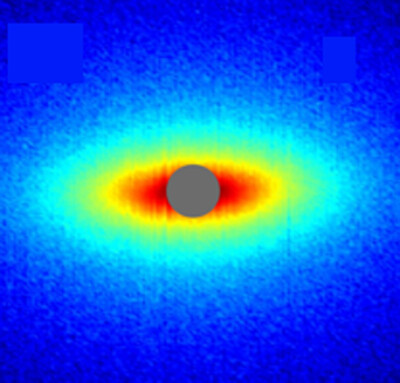
A generalized Zimm plot approach is outlined for quantifying molecular deformation of polymer melts. Combined with the spherical harmonic expansion technique, the proposed method provides several benefits for understanding the small-angle neutron scattering spectra of deformed polymers, including a tensorial extension of the Guinier law and direct visualization of spatially dependent deformation.
Design of multi-shell nested fully annular quasi-ellipsoidal focusing mirrors for small-angle neutron scattering
- Pages: 1180-1191
- First Published: 25 July 2023
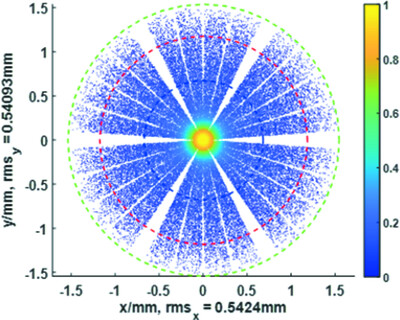
This study describes ten-shell nested fully annular quasi-ellipsoidal focusing mirrors with an m = 3 Ni/Ti supermirror coating for small-angle neutron scattering. The proposed mirrors have been developed to gain enough neutrons on a sample for the specified minimum wavevector transfer Q and the results demonstrate adaptability for instruments with changeable sources.
Symmetry-mode analysis for local structure investigations using pair distribution function data
- Pages: 1192-1199
- First Published: 25 July 2023
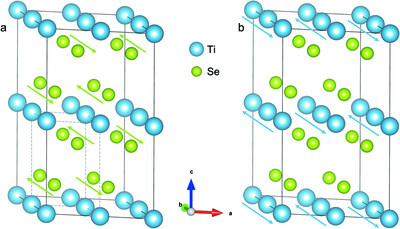
Symmetry-mode analysis is used to detect and characterize structural distortions from pair distribution function data by refining mode amplitudes directly. This approach is successfully applied to a subtle but long-range distortion in TiSe2 and also to a large but highly localized distortion in MnTe. Two new open-source Python packages, isopydistort and isopytools, were used to carry out this analysis within the open-source DiffPy framework.
Progress in detection of and correction for low-energy contamination
- Pages: 1200-1220
- First Published: 25 July 2023
Towards scanning nanostructure X-ray microscopy
- Pages: 1221-1228
- First Published: 28 July 2023
CrysFieldExplorer: rapid optimization of the crystal field Hamiltonian
- Pages: 1229-1241
- First Published: 28 July 2023
In situ neutron diffraction for analysing complex coarse-grained functional materials
- Pages: 1242-1251
- First Published: 01 August 2023
Design of a three-detector system on LUOSHU: a small-angle neutron scattering instrument at China Mianyang Research Reactor
- Pages: 1252-1260
- First Published: 01 August 2023

The LUOSHU small-angle neutron scattering instrument is designed to provide a wide scattering vector magnitude (Q) range of four orders of magnitude by 46 m total length, for studies of nano-particles ranging from the sub-nanometre to the sub-micrometre scale in numerous fields. A high dynamic Q range (Qmax/Qmin) is realized by a unique three-detector system, for better efficiency in experiments. High-flux and high-resolution modes are ensured by two switchable velocity selectors, for more flexibility in different situations.
short communications
Diffraction anisotropy and paired refinement: crystal structure of H33, a protein binder to interleukin 10
- Pages: 1261-1266
- First Published: 16 June 2023
computer programs
TEMGYM Basic: transmission electron microscopy simulation software for teaching and training of microscope operation
- Pages: 1267-1276
- First Published: 14 July 2023
MILK: a Python scripting interface to MAUD for automation of Rietveld analysis
- Pages: 1277-1286
- First Published: 20 July 2023
Shape2SAS: a web application to simulate small-angle scattering data and pair distance distributions from user-defined shapes
- Pages: 1287-1294
- First Published: 28 July 2023
Upgrade of D+ software for hierarchical modeling of X-ray scattering data from complex structures in solution, fibers and single orientations
- Pages: 1295-1303
- First Published: 28 July 2023
crystallographers
book reviews
A History of Scientific Journals: Publishing at the Royal Society, 1665–2015. By Aileen Fyfe, Noah Moxham, Julie McDougall-Waters and Camilla Mørk Røstvik. University College London Press, 2022. Pp. 664. Open access, https://doi.org/10.2307/j.ctv2gz3zp1.
- Pages: 1308-1312
- First Published: 16 June 2023




